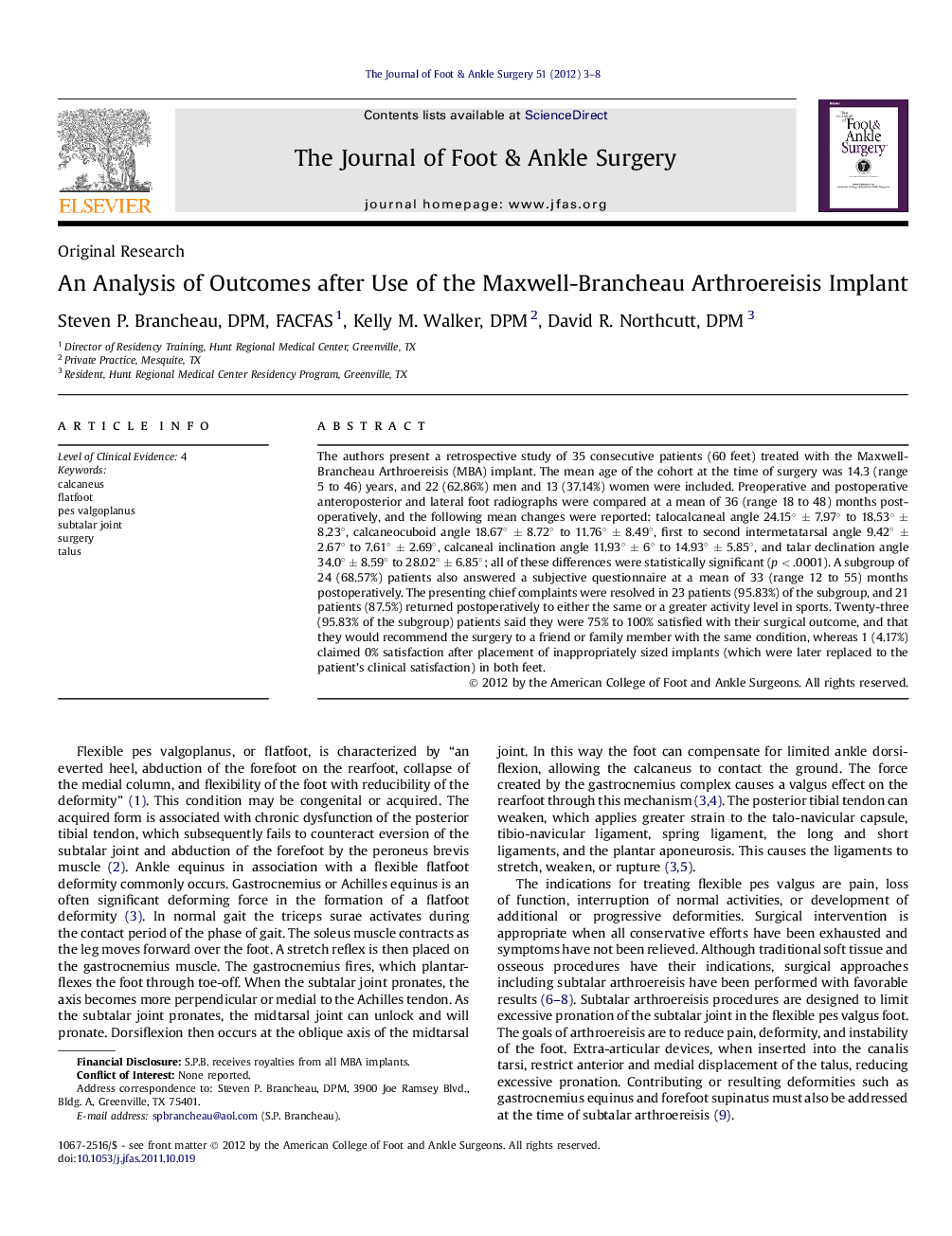| Article ID | Journal | Published Year | Pages | File Type |
|---|---|---|---|---|
| 2713263 | The Journal of Foot and Ankle Surgery | 2012 | 6 Pages |
The authors present a retrospective study of 35 consecutive patients (60 feet) treated with the Maxwell-Brancheau Arthroereisis (MBA) implant. The mean age of the cohort at the time of surgery was 14.3 (range 5 to 46) years, and 22 (62.86%) men and 13 (37.14%) women were included. Preoperative and postoperative anteroposterior and lateral foot radiographs were compared at a mean of 36 (range 18 to 48) months postoperatively, and the following mean changes were reported: talocalcaneal angle 24.15° ± 7.97° to 18.53° ± 8.23°, calcaneocuboid angle 18.67° ± 8.72° to 11.76° ± 8.49°, first to second intermetatarsal angle 9.42° ± 2.67° to 7.61° ± 2.69°, calcaneal inclination angle 11.93° ± 6° to 14.93° ± 5.85°, and talar declination angle 34.0° ± 8.59° to 28.02° ± 6.85°; all of these differences were statistically significant (p < .0001). A subgroup of 24 (68.57%) patients also answered a subjective questionnaire at a mean of 33 (range 12 to 55) months postoperatively. The presenting chief complaints were resolved in 23 patients (95.83%) of the subgroup, and 21 patients (87.5%) returned postoperatively to either the same or a greater activity level in sports. Twenty-three (95.83% of the subgroup) patients said they were 75% to 100% satisfied with their surgical outcome, and that they would recommend the surgery to a friend or family member with the same condition, whereas 1 (4.17%) claimed 0% satisfaction after placement of inappropriately sized implants (which were later replaced to the patient’s clinical satisfaction) in both feet.
